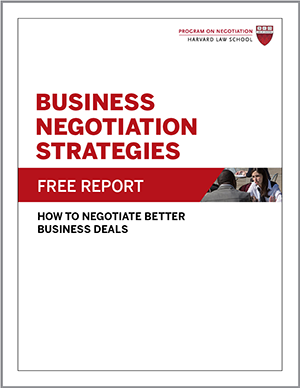The ambitious goal of the professional negotiators who participated in the 2015 United Nations Climate Change Conference, held in a Paris suburb from November 30 through December 11, 2015, was to reach enforceable commitments from nations around the world to lower their greenhouse-gas emissions to levels that could ward off environmental disasters.
At the Paris climate multi-party negotiation, countries submitted national climate plans in which they laid out concrete steps for curbing their greenhouse-gas emissions. In the final agreement, they agreed to begin working toward those reductions in 2020, to submit their climate plans for the coming decades in 2020, and to have their targets reevaluated every five years. Although the governments of the 196 signatories have until April 21, 2017 to approve the agreement, it will go into effect 30 days after only 55 nations have signed on.
The multi-party negotiation offered political negotiation strategies for professional negotiators who are seeking to ensure their voices are heard, as well as those who may face potential deal blockers.
A more ambitious target
Throughout the talks, many of the professional negotiators from the 196 participating nations believed the best they could hope for was a global agreement to limit global warming to 2 degrees Celsius above pre-industrial levels. The global average temperature has already risen about 1 degree Celsius, National Public Radio (NPR) reports.
Yet over the course of the conference, the small and poorer nations that are most threatened by potential environmental disasters—such as islands and coastal areas that could be flooded by rising oceans—pushed for a stronger 1.5 degree target. Adopting the catchphrase “1.5 to stay alive,” representatives of island states and nations displayed keen negotiation skills by arguing throughout the conference that the tougher goal was necessary to ensure their survival. Tony de Brum, the foreign minister of the Marshall Islands, told NPR that a global rise in temperature above 2 degrees would be a “death warrant” that would cause the sea to completely cover over the islands.
Larger, less threatened nations appeared to heed the smaller nations’ concerns. In the final agreement arising from the integrative negotiation, nations to vowed to try to hold an increase in global average temperature to “well below 2 degrees” Celsius. But they also agreed to “pursue efforts to limit the temperature increase to 1.5 degrees C” to “significantly reduce the risks and impacts of climate change.”
The developed world also committed to providing at least $100 billion each year to help developing nations switch from fossil fuels to greener sources of energy and prepare for the effects of climate change, according to NPR.
Heading off opposition
Throughout the deal, the Obama administration worked hard to ensure the final agreement reached in the multi-party negotiation would be safe from Republican attacks, according to the Guardian. In particular, U.S. negotiators strived to head off Republican concerns that the United States would absorb a much larger burden for responding to climate change than developing nations would.
Specifically, U.S. negotiators insisted that the deal be enacted by all nations and that each nation be allowed to design its own climate plan. In addition, the professional negotiators in the U.S. delegation insisted that emissions reduction targets and financing commitments be voluntary rather than legally binding, thus allowing Obama to avoid having to submit the deal to Congress for approval.
Building on a 2014 bilateral climate agreement between the United States and China, the Obama administration forged partnerships with other major climate pollutors, including India, Brazil, and Mexico. And the White House enlisted business leaders, such as former New York mayor Michael Bloomberg, to lobby U.S. corporations to support the agreement.
Supporters of the deal argue that the global groundswell behind it will require Republicans to look for other ways to express their opposition to Obama’s climate policy, such as defending fossil fuel industries, according to the Guardian.
Related Business Negotiations Article: Two Examples of the Winner’s Curse in Business Negotiations


